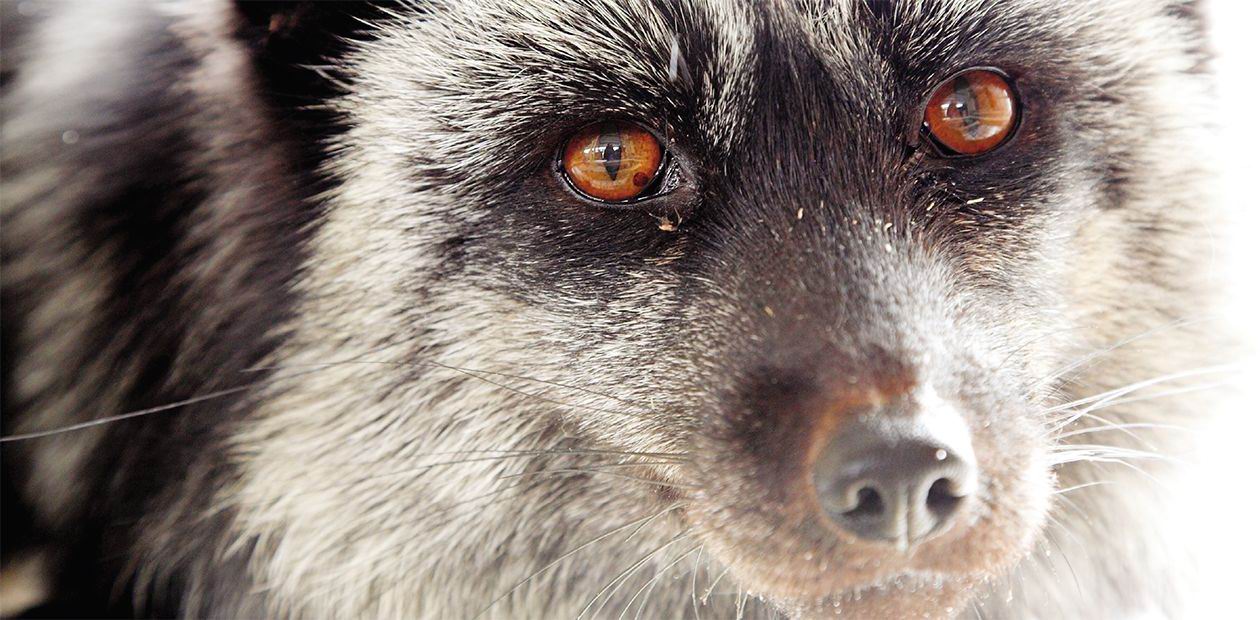Selection of the Best Friend
The experiment on fox domestication, conceived by the outstanding Russian evolutionary geneticist Dmitry Konstantinovich Belyaev and carried out in Novosibirsk Akademgorodok has been recognized as one of the major scientific experiments of the twentieth century. In evolutionary biology the experiment is unprecedented – with over sixty thousand animals, half a century of hard work and the results obtained in the process. Academician Belyaev and his team of enthusiasts, especially his devoted student and follower, Lyudmila Nikolaevna Trut, managed to “turn” the fox into the dog in just fifty years, while it took humans 15 000 years to tame the wolf!
The unique experiment of the Novosibirsk geneticists has been featured in a great number of research papers and popular films. In 2017, the University of Chicago Press published a book, How to tame a fox (and build a dog) on the occasion of Belyaev’s 100th Anniversary, authored by Lyudmila Trut and Lee Dugatkin, a popular American biologist and science writer. In 2018, the English edition of this book received the American Association for the Advancement of Science Award as the Best Young Adult Science Book. Lyudmila Nikolaevna shares her memories about the times and events at the beginning of the experiment on fox domestication that brought world fame to the Novosibirsk geneticists
Pushinka (“Fluff”) was the first fox to live with humans and give birth to a litter of cubs; indeed, she looked like a piece of fluff and was the most affectionate among the thousand foxes on the farm. On a March morning of 1975, she joined Lyudmila Nikolaevna Trut in a small house on the premises of the experimental fox farm in Novosibirsk Akademgorodok, specially equipped for home-sharing of humans and animals. The researchers were very worried: the stress of adapting to a new ecological niche always leaves its marks on the animal.
Lyudmila N. Trut is Doctor of Biology, professor, and senior researcher of the Institute of Cytology and Genetics, SB RAS (Novosibirsk). Awarded with the Badge of Honor, Silver and Gold Medals of the VDNKh (Exhibition of Achievements of National Economy), and N. I. Vavilov Prize (1982); Honored Science Worker of the Russian Federation (2005)On the first day at her new home Pushinka was restless. In the wild, expecting vixen mothers usually find a quiet shelter until the cubs arrive. Pushinka got a nest prepared for her in a separate room, but the vixen would not stay still – she did not eat a morsel and kept running and running… Later in the evening, Lyudmila Nikolaevna’s daughter dropped in together with her friend, and the girls decided to stay overnight. The only place to sleep was on the floor, and while they were preparing for sleep, the vixen was nervous. But to everyone’s surprise – as well as and joy and relief – in the middle of the night, Pushinka crept out of her room, sneaked under the girls’ blanket, curled up and fell asleep…
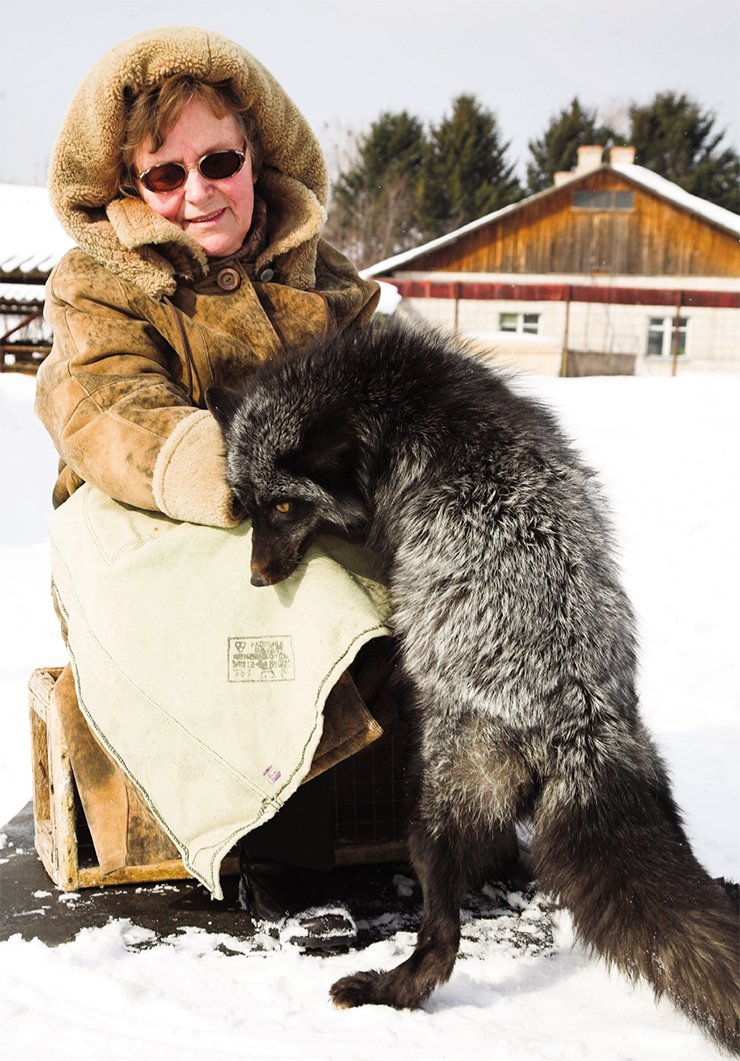 This is just one of many amazing episodes when this incredibly affectionate and friendly vixen demonstrated its dog-like character. For instance, when a new gatekeeper dropped in to greet the newcomers, she met him with abrupt calls very similar to dog barking.
This is just one of many amazing episodes when this incredibly affectionate and friendly vixen demonstrated its dog-like character. For instance, when a new gatekeeper dropped in to greet the newcomers, she met him with abrupt calls very similar to dog barking.
On the night the researchers noticed the tentative signs that the pups were about to be born, Lyudmila Nikolaevna was on the watch. At first, everything was quiet, then she heard the the pups’ squeaks. The first thing the vixen did was bring a naked, still wet cub and toss it on the cold floor in front of Lyudmila’s feet, where she loved to sit. Lyudmila Nikolaevna was afraid the pup would catch a cold and die: she scolded Pushinka, took the pup and placed it back in the nest – and brought its mother there, too. By that time, the researchers had learned that tame foxes were capable of maternal aggression and did not permit handling the newborns, but the vixen willingly brought the pup!
But after a while, it repeated – again, and again, and again… They tried to reason with the vixen, but in vain. Finally, Lyudmila Nikolaevna put a warm mat near her bed, and Pushinka brought all her cubs there. It was clear that she was struggling with two drives: to be with her young and to stay with the human. As a result, she worked out a new behavioral strategy by combining what would be «incompatible» for a wild animal. It was only then that Pushinka finally settled down and nurtured the pups.
Such experiments on house sharing are necessary to speed up the domestication effect. A fox that spent all its life in an isolated cage with limited contact with humans had to be freed from captivity. A group of researchers headed by Academician D. K. Belyaev decided to house some of the selected individuals directly near humans. The wolf on his way to become the dog was in completely different circumstances: the animals had a choice whether or not to live near the ancient human settlements. Pushinka made her choice.
How it all began
Dmitry Konstantinovich Belyaev was always fascinated by the evolutionary puzzles of domestication. He had an extensive knowledge of fur farming and always compared the fox with its nearest relative – the dog, and wondered: a hungry stray dog bears two litters a year, while a fox on the farm, despite the optimal scientifically developed housing and feeding, gives birth to a single litter in March? How did the wolf, in the process of its evolutionary transformation into the dog, lose its seasonal restrictions on breeding?
It occurred to Belyaev that behavior-based natural selection was what played the main role in the beginning of the transition from the wolf to the dog: only animals that tolerated humans became “domesticated” and began living near humans. More and more tolerant individuals were born with each consecutive generation. Eventually, the initially unconscious artificial selection came into play. It was later replaced by artificial selection consciously directed at specific behavioral traits.
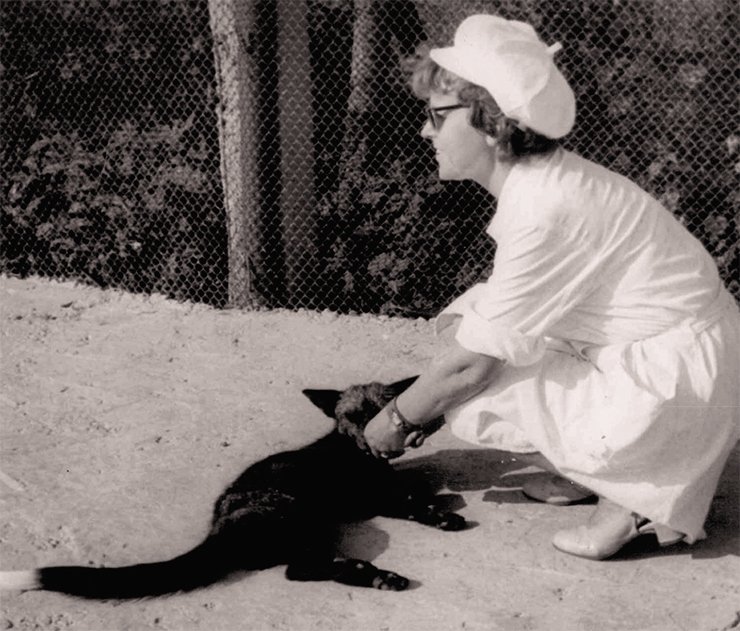
Dmitry Konstantinovich believed it was this sort of behavioral selection that led to the changes not only in the behavior itself, but also in the physiology and morphology of the wolf. However, that idea was nothing but theoretical assumptions, with facts long lost beyond history. What if researchers attempted to recreate the earliest stage of domestication? The idea seemed utopic at first, but the experiment began.
The future Academician began his works on the selection of human-tolerant foxes back in the early 1950s on an Estonian fur farm. In 1958 N. P. Dubinin, the founding director of the Institute of Cytology and Genetics of the SB AS USSR, invited him to the rising Novosibirsk Akademgorodok, where he organized the Department of Animal Genetics and became a deputy director of the Institute.
Back then, even the Institute building was still under construction, not to mention the experimental farms, including the fur farm. But Dmitry Konstantinovich Belyaev did not want to lose time. He understood the immense scale of the task standing before them – compatible with the human lifespan. Altai was close to Akademgorodok: there was a major zverosovkhoz (a collective farm specialized on furbearing animals), Lesnoy, where aces of the fur industry worked: director V. A. Chetyrkin and chief livestock technician S. A. Illarionov; both were Honored Workers of Fur Farming. They felt favorably toward the planned experiment and helped Belyaev organize an experimental station of the ICG SB RAS at their fur farm. That is where the first “Estonian” foxes went, eventually joined by friendly animals from other fur farms. Only ten years later, the animals were finally moved to Akademgorodok, when the construction of the fur farm there was finished.
Moscow-Akademgorodok-Altai
Every now and then Belyaev would visit the Chair of Higher Nervous Activity of the MSU Biological Department to discuss with professor L. V. Krushinskiy the budding experiment and the possibility of staffing it with smart and reliable alumni. Back then, he was still working at the Central Research Laboratory of Fur Farming in Moscow and living in the Udelnyi village. That is where two “smart and reliable” students, Lyudmila Trut and her groupmate, Tamara Bondarenko, went to work.
First, Belyaev tested the future scientists: he asked what they knew about foxes; how they were going to select the progenitors of a new tame population among the thousands of animals on the farm, etc. He told the girls about his project and offered to hire them to work at the Institute directly after their graduation. Although they still had to be formally introduced to Dubinin, the final decision was made by Dmitry Konstantinovich.
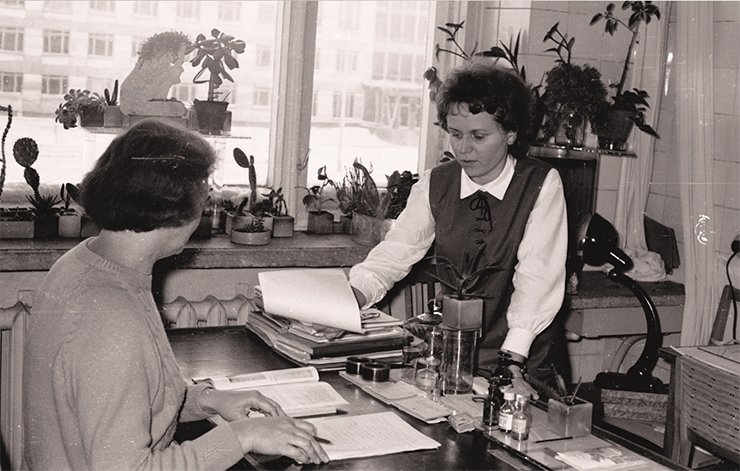
Lyudmila Nikolaevna has been fond of animals, especially dogs, since she was a little child; she always thought her job had to be about animals to be truly enjoyable. That is why she left for Novosibirsk without a second thought – she was sure she was doing the right thing. She believes she was incredibly lucky: she had not even graduated when she got her first scientific task, which predefined her whole life. Her groupmate Tamara, however, found the harsh working environment too challenging and eventually returned to Moscow.
Up until 1967 Lyudmila Nikolaevna spent most of her time at Lesnoy in the Altai mountains, working on a project on the selection of “friendly” foxes. The coldest part of the year – January and February – was the most important: this was the time of selecting breeding pairs and mating, which required continuous attention of the researchers. She constantly had to travel back and forth from Akademgorodok to Altai. The train from Biysk to Tomsk used to stop at the Seyatel’ station, but it took time to get from the station to the institute – or home: public transport never kept to the schedule, and on very cold days, sometimes there were no buses in the streets at all. On one of these freezing winter mornings, Lyudmila spent hours waiting for the bus. The professor recalls a haunting thought: if she ever managed to get to the Institute that morning, she would give notice at the very same instant! She was chilled to the marrow! But a car passing by stopped and gave everyone a ride home. Her mom, her daughter and her husband were there – with hot food and tea! The desire to quit evaporated…
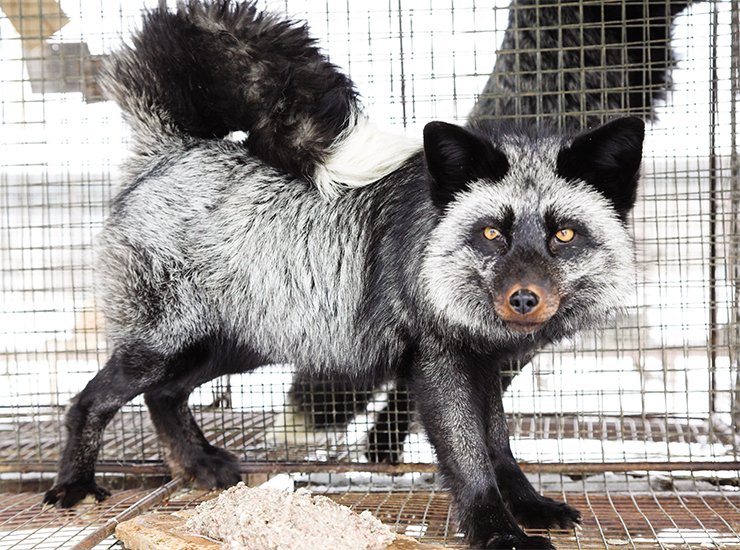
The fox domestication experiment started in the dark times for genetics: repressions against the “pseudoscience” continued until the resignation of Khrushchev in 1964; throughout this period, the Institute was on the brink of dismissal. In January 1960, Dubinin was essentially forced to step down, and Academician M. A. Lavrentiev only managed to stand upon his right to pick the new director – and he chose D. K. Belyaev. Their joined effort saved the Institute.
Later, in the turmoil of the post-Perestroika 1990s, when the situation with funding turned dire, the question of closing the experimental fur farm came up. The researchers returned home every evening, not knowing if they would see their pets alive next morning…
When kindness is in the genes
The essence of the experiment lies in selecting the friendliest individuals producing even friendlier offspring, and so forth. Over the past years, about ten thousand animals were used in the experiment, producing at least 50,000 pups.
The researchers were sure that behavioral changes occur at the genetic level; however, hypothetically, other factors could come into play, such as peculiarities of prenatal developement, conditions of the early postnatal period and communication with the mother. To test some of these assumptions, the researchers decided to transplant blastocysts (i. e. embryos on the earliest stages of development) from a domesticated mother into the womb of a pregnant aggressive vixen (recipient), and vice versa.
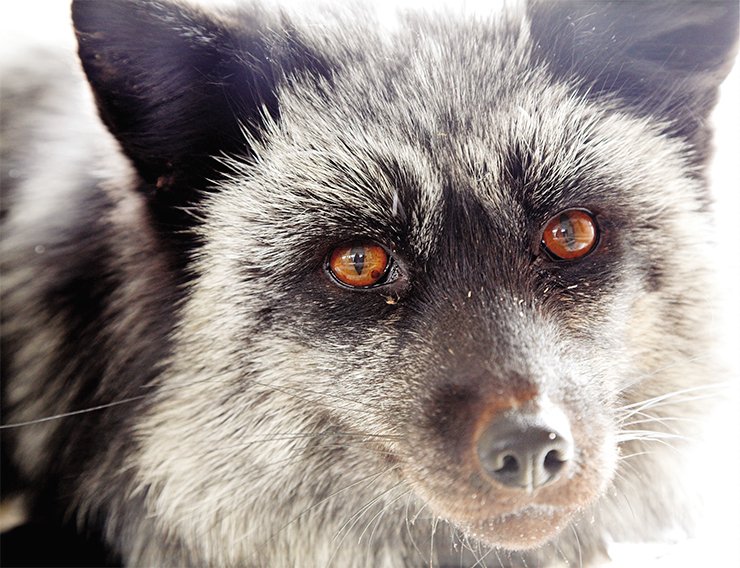
But what if all these trait changes are but a side-effect of the selection directed at completely different properties and traits? In the beginning of the unprecedented evolutionary experiment, D. K. Belyaev assumed that all questions concerning the raise of domestic animals could be answered by examining their defining trait – i. e. the absence of fear of humans.
The ancestors of domestic animals, just like the wild animals nowadays, normally fled or attacked when humans approached. At the same time, animals that lived in close contact with humans had a more stable access to food and better protection from predators. In the result, individuals born without aggression to humans gained an advantage and survived.
In other words, this too is natural selection, but with a different vector, aimed at preserving individuals with specific behavioral reactions to the main factor of the new environment – the human. Belyaev assumed that behavioral selection was the moving force of domestication, and genes controlling the behavior had to have very broad ranges of pleiotropic (multiple) influence on various features and traits of the organism (Belyaev, 1969; 1972). A change of the selection pressure vector could result in the activation of “dormant” genes and expression of the previously hidden variability, which pointed at the possibility of domestication going at a much faster rate than the standard interpretation of Darwin’s theory implied.
Indeed, selection aimed at friendly behavior toward humans, atypical for wild animals, caused a true explosion of variability of behavioral, physiological and morphological traits in accordance with the “domestication syndrome”. It turned out that this variability was based on changes in the major regulatory systems of individual organism development, and most importantly – a decrease in the activity of hypothalamo-pituitary adrenocortical system, the key element in the hormonal regulation of stress responses.
The genetic basis of these coordinated morphological and physiological changes remains an object of study (Trut et al., 2013). Their nature may lie in the phenomenon of genetic linkage: selection by genes controlling the behavior inevitably affects adjacent genes located on the same chromosome, leading to their linked inheritance over generations. On the other hand, they can be based on gene pleiotropy, just like Belyaev assumed: behavioral genes can be involved in the control of other vital functions. A proof of this hypothesis is the phenomenon of neoteny (arrested development), typical for domestic animals and observed in tame foxes.
In any case, the results of the unique domestication experiment allowed Belyaev to propose a radically new theory of destabilizing selection as a specific form of selection pressure (Belyaev, 1979). In essence, it states that genes responsible for behavior regulate multiple other genes, and behavior-based selection causes, along with changes in the behavior, a destabilization of the animal’s individual development and emergence of a whole complex of new traits unrelated to behavior. “Domestication is, in a way, akin to a natural catastrophe. In the context of domestication, the explosion of morphogeny and new evolutionary directions occurs due to the collapse of homeostatic systems created by the preceding evolution; deeply hidden forms of genetic material (dormant genes) are retrieved from the mobilization reserve. <…> The domestication experiment offers an insight into the potential of a species. Science can, if necessary, implement any of these possibilities” (Belyaev, Trut, 1982)
Belyaev came to the farm when the aggressive mother vixen had its first mixed litter, and the pups reached the age when they leave the nest and explore the cage. He could not wait to see the pups with genetically different behavioral traits born and raised by the same mother.
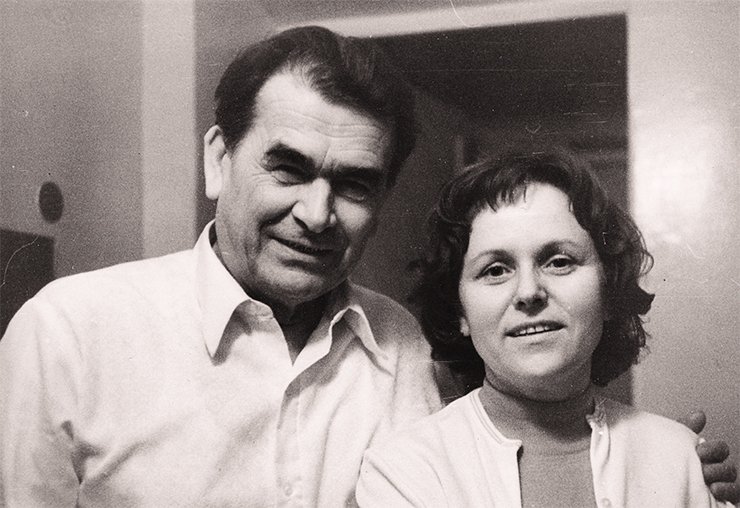
Belyaev stopped near the cage where the pups lived, and observed them for a long time. It was a stunning sight, Lyudmila Nikolaevna recalls. First, the colored pups emerged – the true children of the aggressive mother. They were so small they were still staggering, and yet they began avoiding and snapping at the people right away. Then came the “adopted” black pups that grew from the embryos transplanted from a tame mother. They whelped, wagged their tails and tried to come closer. The difference was striking!
Belyaev simply could not take his eyes off the pups. And then he said: “Do you need any more proof that we are seeing a genetic transformation of the behavior of Vulpes vulpes (the red fox) into the behavior of Canis familiaris (the domestic dog)!”
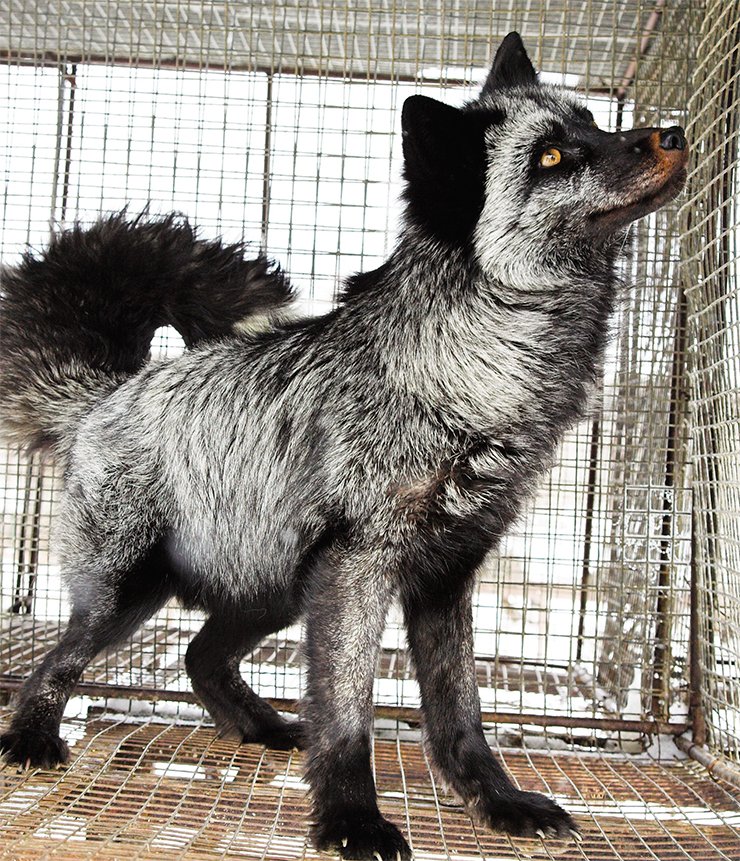
Can the fox revert to its original state – become aggressive again, if the selection process is reversed? There is no definite answer, although the question got its share of attention. Professor Trut tends to think that the animals are past the point of no return and cannot revert to their original state. Among the foxes used in the experiment, there have always been individuals that did not qualify to be “the elite.” however, they were picked for selection by important commercial criteria. Still, they remained tame for many generations. Lydmila Nikolaevna believes that the fox preserves the traits acquired in the selection process.
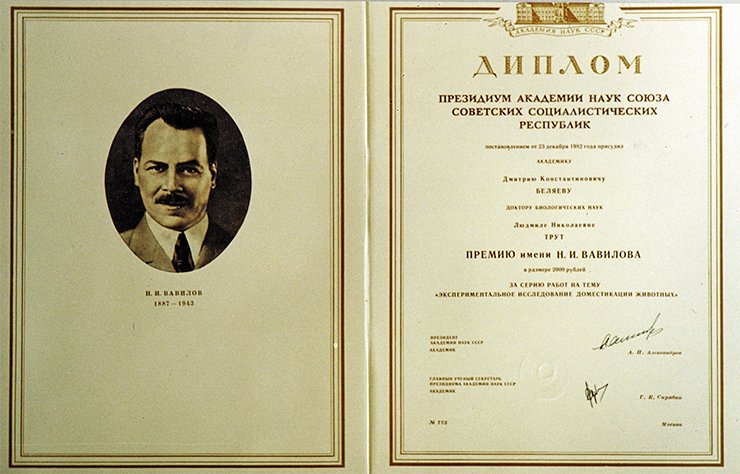
In 2003, an outstanding evolutionary anthropologist R. Wrangham wrote in a letter addressed to L. N. Trut: “Our present concepts of the human evolution are most greatly influenced by your work on domestication of foxes”. Wrangham thinks that the possible human ancestor is a primate phenotypically similar to the bonobo (the dwarf chimpanzee) rather than the chimpanzee – an ape strikingly close to the Australopithecus. The differences between the chimpanzee and the bonobo are surprisingly similar to the differences between the wild and tame foxes. The bonobo has evolved to be more docile, into a kind of a “tame” chimpanzee. It is possible that the early ancestors of bonobos evolved in ecological curcumstances with strong selection pressure against intragroup aggression in favor of peace and cooperation. This could cause the complex of physiological and morphophysiological changes revealed in the bonobo similar to that in the tame foxes.
Wrangham believes that ever since the rise of Homo sapiens, our species has been experiencing a decrease in sexual dimorphism, the size of facial bones and thickness of limb bones. Belyaev wrote about this process: “… the change in the central system of neurohumoral regulation necessitated dramatic changes of traits and functions stabilized in the preceding process of evolution. In this sense, selection by features and functions of the brain in the process of evolution caused a similarly extensive variability and boosted the morphogeny in the same way as we observe in the process of domestication”. (Trut, 2007)
On the day after the arrival of Pushinka’s pups, Academician Belyaev came to the farm. He heard the amazing story, slapped his hand on the table and said: “One day, we will write a popular book about all these astonishing phenomena that we observed in our unique experiment.” Unfortunately, ten years later Belyaev passed away unexpectedly, and the idea was left dormant.
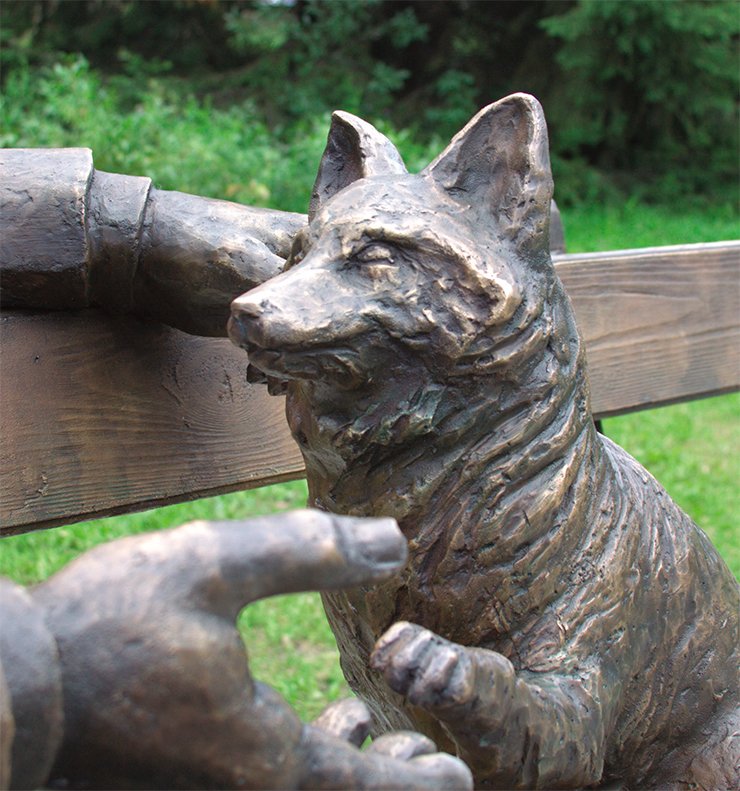
Over three decades later, such a book was published by the University of Chicago Press – the largest academic publishing house in the US. Just like Belyaev wished, it described the key stages of the experiment: what happened and where, and how the attitude of the fox to the human changed. It told about the lives of people intimately connected with this fundamental project, and most importantly, about the difficult life path of its key figure – Dmitry Konstantinovich Belyaev, a visionary scientist, charismatic leader and kind-hearted man.
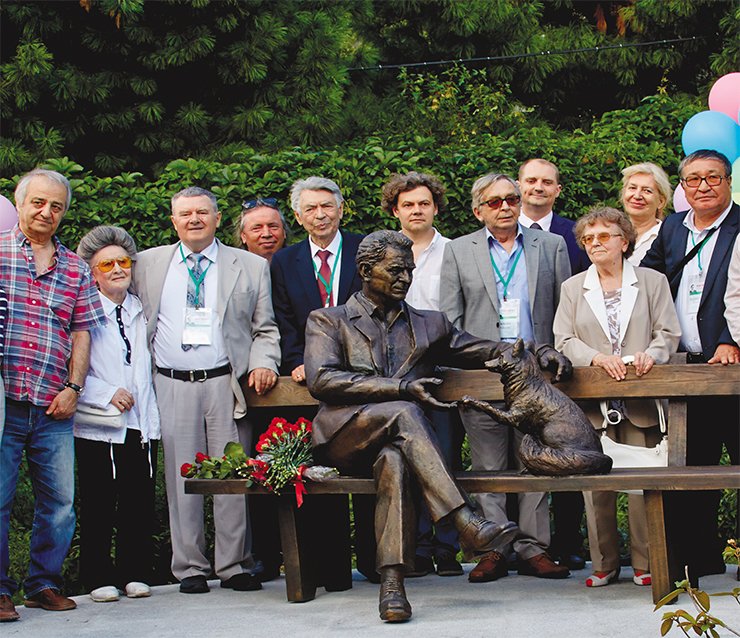
Naturally, the authors considered publishing the book in Russia, in the SB RAS Press. Professor P. M. Borodin did a lot to make it possible. Unfortunately, so far it has only been possible to do it in the USA, which demonstrates a different attitude to science in this country, where even lay people show a keen interest in scientific progress. On one occasion, several employees of the ICG SB RAS who came to the US to visit a scientific confrence, went on a tour at the museum. Their tour guide was a frail old lady. Not only she knew about the existence of Novosibirsk Akademgorodok, but she knew about the “wonderful tame vixen” that was born there – and she read about it in a research journal!
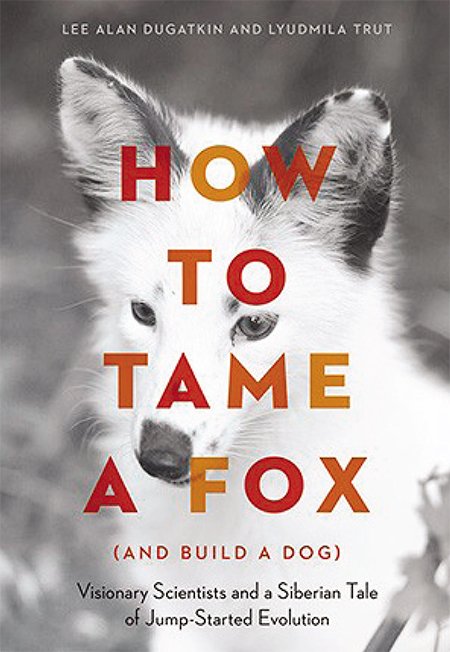 Over 17,000 copies of How to tame a fox (and build a dog) have sold in the US. The American Association for the Advancement of Science (AAAS), the publisher of Science, a leading scientific journal, ordered 4000 more copies – they will be distributed among school libraries free of charge.
Over 17,000 copies of How to tame a fox (and build a dog) have sold in the US. The American Association for the Advancement of Science (AAAS), the publisher of Science, a leading scientific journal, ordered 4000 more copies – they will be distributed among school libraries free of charge.
The experiment that began sixty years ago is still going. The main results of the selection of the “domesticated elite” were achieved by the turn of the millennium, but the fox farm in Akademgorodok still exists. Lyudmila Nikolaevna rarely gets to meet the foxes; nowadays, young specialists work at the farm. The problem is, even despite the fact that there is still some variability observed in the animals’ behavior, in terms of the behavioral criteria initially used in the experiment all these foxes are “elite.”
New selection criteria are necessary. For further progress, as many animals as possible must be placed into a new ecological niche – i. e. they must live with humans. But in the times of the experiment with Pushinka, scientists from Belyaev’s group were willing to spend days at work. In our time, it is virtually impossible to find people willing to work in such a challenging mode…
References
Belyaev D. K., Trut L. N. From natural to artificial selection: the wonders of selection // Science in the USSR. 1982. N. 5. P. 24—29, 60—64 [in Russian].
Belyaev D. K., Trut L. N. The convergent nature of morphogeny and the concept of destabilizing selection / In.: Vavilov’s Legacy in Modern Biology. Moscow: Nauka, 1989. P. 155—169. [in Russian]
Belyaev N. D. Dmitriy Konstantinovich Belyaev. Brush strokes in the portrait // SCIENCE First Hand. 2017. V. 47. N. 2/3. P. 110—123.
Trut L. N. An Evolutionary Experiment // SCIENCE First Hand. 2007. V. 14. N. 2. P. 60—63.


